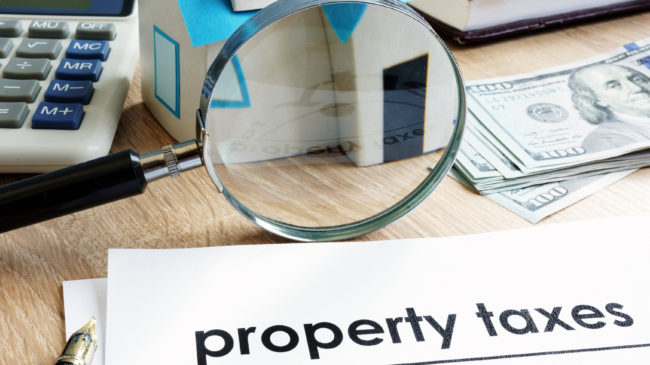California Proposition 15: Tax on Commercial and Industrial Properties for Education and Local Government Funding Initiative.
Summary
California’s Proposition 15 would require commercial and industrial properties to be taxed based on market value and would generate additional tax revenue. It would increase funding for K-12 public schools, community colleges, and local governments by requiring that commercial and industrial real property be taxed based on current market value. Residential properties, agricultural properties, and owners of commercial and industrial properties with a combined value of $3 million or less would be exempted from this change.
Fiscal Impact
It is anticipated that the proposal would have a net increase on property tax revenues of $6.5 billion to $11.5 billion. This would be allocated to schools (40 percent) and other local governments (60 percent), according to a Legislative Analyst’s Office (LAO) review dated October 2, 2019.
Proponents’ Argument For
Proponents argue that for more than four decades, big corporations have not been paying their fair share of property taxes, letting California’s school funding fall behind. They say that because companies get away with paying too little property tax, California now has the most overcrowded classrooms in the U.S. and some of the worst ratios of counselors, librarians, and nurses per student. Proposition 15 ensures that our schools and communities come first—with the resources to educate all our kids and the services to support all our families. Advocates say it closes commercial property tax loopholes that benefit a fraction of corporations and wealthy investors, without affecting homeowners or renters (who continue to benefit from Proposition 13 (1978) protections), and reclaims $12 billion every year to fund world-class schools and strengthen local economies to lift all Californians.
Opponents’ Argument Against
Opponents of Proposition 15 argue that this initiative threatens the largely effective Proposition 13 of 1978. They say Prop. 13 has worked exceedingly well for over 40 years and has kept homeowners and small business owners from losing their properties to skyrocketing property taxes while providing the government with a reliable source of revenue. But now, they say, proponents of Prop. 15 want to strip away that protection from business and industrial properties to seize what they believe to be between $6 billion to $12 billion annually in taxes.
Discussion
Proposition 13 (1978) limited property tax assessment increases to two percent annually until a property is sold, when it is reassessed to market value. Since annual real estate price increases in much of California have been greater than two percent annually, assessed property tax values for many long-held properties in the state are well below market value.
Proposition 15 seeks to remove this limit for commercial properties worth more than $3 million. Instead, these properties would be re-assessed regularly so that their property tax assessments remain near market value.
The LAO’s projection that the initiative would increase local government tax revenues by up to $12 billion annually preceded the outbreak of COVID-19, which has sharply reduced the value of several types of commercial properties. Especially hard hit are retail, hospitality, and office buildings, all of which are likely to generate less income as people increasingly shop online, avoid travel, and work from home.
Another concern about the anticipated revenue gains was raised by two county auditors in a June op-ed. They contend that building up in-house expertise to assess commercial properties would cost $1 billion over three years, with ongoing expenses for additional staff thereafter. Meanwhile, the assessment increases and incremental revenue may take years to roll in.
Assessors in some counties may also become busy with reassessing residential properties next year if the coronavirus recession continues to affect home values. Under Proposition 8 of 1978, assessments must be temporarily reduced whenever market values fall below assessed values.
Proposition 15 focuses on increasing local government revenues, but this recession is applying pressure on local governments as well as commercial property owners to increase spending with reduced revenue. Small businesses have been closing by the thousands and others are letting their employees go. Hiking taxes on their property or rent won’t help during this period.
Whatever Proposition 15’s aggregate impact on local government revenue may be, it would not be uniform across the state. Poorer areas that have seen less commercial property appreciation would likely gain proportionately less new revenue than more affluent parts of the state.
Governments in the parts of the state with the highest and most rapidly rising property values will see the biggest windfalls (unless, of course, these gains are undone by COVID). The prime example of this is the city and county of San Francisco, which, according to research by the Public Policy Center of California, would receive the biggest proportional revenue increase.
San Francisco collects and spends $12.3 billion each year, or about $14,000 per resident. While this figure needs to be considered in light of the fact that San Francisco fulfills both city and county functions, serves commuters as well as residents, and operates a regional airport, it still denotes a local government that is not struggling for cash.
By contrast, Kern County spends about $2.8 billion for a similar population. Combining Kern County’s expenditures with those of its largest city, Bakersfield, yields a total cost of city and county governments of around $5,000 per resident—a small fraction of the San Francisco total. But, compared to San Francisco, Kern County and Bakersfield can expect proportionately less new revenue from the split-roll initiative.
Finally, to the extent that commercial real estate taxes are hiked, they may tip certain properties into unprofitability. Owners of retail facilities may have to take lower rents for an extended period of time as retailers struggle with reduced demand. Rising costs due to higher taxes could result in red ink, dampening incentives to maintain and improve shopping centers.

